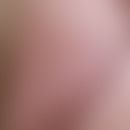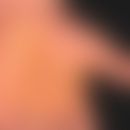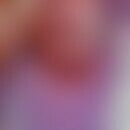Synonym(s)
DefinitionThis section has been translated automatically.
Coin rubbing (Gua Sha Chinese) is a folk medicine treatment method practiced in China and Southeast Asia that is used for general disorders, e.g. chronic pain, fever, flu, headaches, heat stroke and upper respiratory tract infections.
Coin rubbing is also often used by practitioners of traditional Chinese medicine. In this therapeutic application, a rounded edge of a porcelain spoon, a coin or similar is scraped several times over a previously oiled area of skin until a clear discoloration and bleeding of the skin occurs. The pre-treatment is carried out with various substances such as camphor, menthol, cajeput oil as contained in the tiger balm.
The dermal bleeding usually persists for 2 to 4 days. Typically, patients feel immediate relief and change. Clinical efficacy of the procedure has not been scientifically proven.
The streaky skin bleeding caused by gua sha can easily be misinterpreted as a sign of physical abuse or a blood clotting disorder (Zuijlmans CW et al. 1996).
Note(s)This section has been translated automatically.
Gua Sha (刮痧), composed of Gua (刮, "scraping") and Sha (痧, "acute disease"Gua Sha (刮痧), composed of Gua (刮, "scraping") and Sha (痧, "acute disease")
LiteratureThis section has been translated automatically.
- Zuijlmans CW et al. (1996) Rubbing with a coin is not abuse. Ned Tijdschr Geneeskd 140:2552-2554.
- Darsha AK et al.(2020) New Onset of Linear Purpura on the Back: Coining Therapy-Associated Ecchymoses. Cureus 25 12:e8833. doi: 10.7759/cureus.8833. PMID: 32742844; PMCID: PMC7384708.



